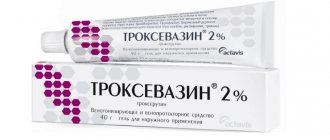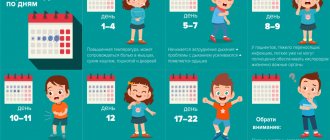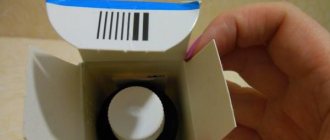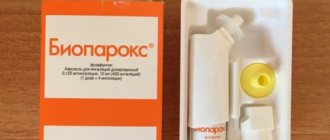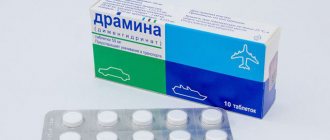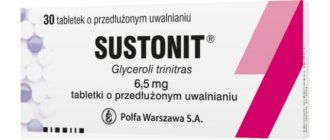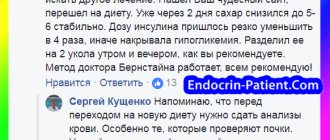In the drug treatment clinic "Verimed", the drug "Naltrexone" is used in the treatment of alcoholism and drug addiction. It is an effective opioid receptor antagonist that is not addictive even with long-term use and is generally well tolerated by patients.
Pharmacological properties of the drug Naltrexone
Synthetic antagonist of opiate receptors. Its chemical structure is close to oxymorphone, the difference is that the methyl group at the nitrogen atom is replaced by a cyclopropylmethyl group. Naltrexone blocks the pharmacological effects of exogenous opiates through competitive binding to opiate receptors. Eliminates physical dependence and helps patients with opiate addiction to abstain from drug use after detoxification. At a dose of 50 mg, it blocks the pharmacological effect of 25 mg of heroin administered intravenously for 24 hours. When the dose of naltrexone is doubled, the duration of the blocking effect increases to 48 hours, and when using a triple dose - up to 72 hours. Naltrexone is almost completely absorbed when taken orally. , 95% is metabolized in the liver into pharmacologically active metabolites, the main of which is 6-β-naltrexone, which is also a direct opioid antagonist. The second metabolite is 2-hydroxy-3-methoxy-6-β-naltrexone. Naltrexone and its metabolites are excreted primarily in the urine. The amount of free naltrexone excreted in urine is less than 1% of an orally administered dose, and the amount of free and bound 6-β-naltrexone is approximately 38% of an orally administered naltrexone dose. The pharmacokinetic profile of naltrexone indicates that the parent substance and its metabolites undergo intrahepatic recirculation. Maximum plasma concentrations of naltrexone and 6-β-naltrexone are observed within 1 hour after oral administration. Naltrexone does not accumulate in the body with long-term use, while the concentration of 6-β-naltrexone in the blood plasma increases significantly (the metabolite has a longer half-life).
How it works
Your doctor should tell you how to take Naltrexone. It should not be used without prior consultation with a narcologist. Once in the body, the active substance of the drug binds to opioid receptors and blocks the effects provided by endorphins. Because of this, the neurotransmitter dopamine, which provides a feeling of euphoria and satisfaction when drinking alcohol, does not increase - it remains at the same level. This makes drinking alcohol a meaningless activity that does not bring any satisfaction to the patient. The alcoholic realizes that he will no longer get the feelings that ethanol gives him and refuses to use it. Gradually, his physical and psychological dependence on alcohol decreases, the number of relapses is reduced or completely absent. Therapy with Naltrexone allows you to restore the patient’s performance and improve his psychological state. It also creates optimal conditions for the restoration of damaged internal organs.
If you combine drug treatment with alcohol, the following may occur:
- acute stomach pain;
- change in color of the sclera - turn yellow;
- darkening of urine.
Use of the drug Naltrexone
Treatment with naltrexone begins after the patient abstains from taking drugs for 7–10 days (in the absence of symptoms of withdrawal syndrome). Abstinence from drug use is identified by urine laboratory testing for opioid levels. Treatment begins with a negative provocative test with 0.5 mg of naloxone. A naloxone test is not performed in patients with withdrawal symptoms or when opiates are detected in the urine. The naloxone test can be repeated after 24 hours. Naltrexone treatment is started with caution, gradually increasing the dose. Initially, 20 mg is prescribed orally as a solution. If there are no signs of withdrawal syndrome within an hour, the patient is given the remaining daily dose of the drug (30 mg). The doctor should monitor the act of swallowing the drug solution. After the initial dose, naltrexone is prescribed at a dose of 50 mg every 24 hours (the use of naltrexone at the indicated dose is sufficient to block the effects of opiates administered parenterally, for example, 25 mg of heroin administered intravenously). More flexible treatment regimens can be used:
- 50 mg in the first 5 days of the week and 100 mg on Saturday;
- 100 mg every 2 days or 150 mg every 3 days;
- 100 mg on Monday, 100 mg on Tuesday and 150 mg on Friday.
Contraindications for use
The medicine should not be used if:
- individual intolerance to the active and auxiliary components included in the composition;
- development of withdrawal symptoms due to opioid addiction;
- inflammation and viral damage to the liver in acute and chronic form;
- positive laboratory results for the presence of opioids in the urine.
Patients with impaired liver and/or kidney function may use the composition with caution.
Side effects of the drug Naltrexone
In 10% of cases - sleep disturbances, anxiety, increased nervous excitability, painful cramps, nausea, vomiting, general weakness, joint or muscle pain, headache; in less than 10% of cases - anorexia, diarrhea, constipation, increased excitability, prostration, irritability, dizziness, skin rashes, delayed ejaculation, decreased sexual potency, chills; less than in 1% of cases - hyperemia of the nasal mucosa, itching, rhinorrhea, sneezing, a feeling of dry mouth, increased mucus secretion, sinusitis, difficulty breathing, tracheophonia, cough, shortness of breath, nosebleeds, phlebitis, edema, increased blood pressure, nonspecific ECG changes , tachycardia, flatulence, hemorrhoids, ulcerogenic effects, frequent or impaired urination, increased or decreased libido, increased secretion of the sebaceous glands, acne, athlete's foot, skin changes corresponding to the first degree of frostbite, alopecia, depression, paranoia, increased fatigue, confusion, disorientation in time and space, hallucinations and nightmares, decreased visual acuity, pain and burning sensation in the eyes, photophobia, pain and tinnitus, increased appetite, changes in body weight, pathological yawning, drowsiness, fever, pain in the groin area, enlargement lymph nodes, a feeling of heat in the extremities, a sudden rush of blood to the face, increased activity of transaminases in the blood serum, lymphocytosis. One case of idiopathic thrombocytopenic purpura has been described in a patient who may have been sensitized to naltrexone during previous treatment; After discontinuation of naltrexone and administration of corticosteroid therapy, recovery occurred.
Stopping anti-alcohol treatment
In some patients, stopping the course of Naltrexone does not cause any adverse reactions. They feel well and do not complain of illness. Others are diagnosed with withdrawal symptoms. It consists in:
- increased nervousness;
- a significant decrease in energy level;
- inability to concentrate on the work at hand;
- high irritability.
But all these conditions pass quickly enough, so there is no need to worry about them. If you want to get rid of alcohol addiction using the drug Naltrexone, contact our drug treatment center. We will select the optimal treatment regimen for you and help you overcome your addiction.
Special instructions for the use of Naltrexone
Naltrexone is a complete opiate antagonist and does not cause the development of tolerance, physical or mental dependence. A patient receiving naltrexone treatment should be warned that uncontrolled use of opiates during this period can lead to severe withdrawal syndrome, including the development of coma. The patient should carry a naltrexone prescription card with him to inform medical professionals in case of emergency care. If it is necessary to overcome the blockade of opiate receptors (induction of anesthesia, pain relief in emergency conditions), high doses of short-acting drugs are used to reduce the risk of respiratory depression and the development of circulatory collapse. Naltrexone may cause an unwanted induced withdrawal effect. With long-term treatment with naltrexone, monthly laboratory monitoring of the functional state of the liver is necessary.
Precautionary measures
During treatment, it is important to remember the rules:
- If any disease develops and the doctor considers it necessary to prescribe any medications, he must be warned about the anti-alcohol treatment being carried out.
- If side effects occur, you should urgently get a second consultation with a narcologist.
Naltrexone cannot be combined with hepatotoxic medications - the risk of liver damage increases significantly. If you drink it simultaneously with Thioridazine, you may experience deterioration in attention, memory, drowsiness, and even lethargy.
Effect on the body
Naltrexone's action is based on the principle of blocking receptors that cause pleasant feelings of joy and serenity after consuming intoxicants. After taking the drug, the patient ceases to feel the usual “high”, so further consumption of alcoholic beverages loses its meaning.
The drug does not guarantee complete recovery from addiction, but it helps a person temporarily return to normal life. It is important to use this period for rehabilitation to help the patient return to a healthy life forever.
Naltrexone can only prohibit an addict from drinking alcohol for a certain period of time, but it does not eliminate the psychological causes of alcohol dependence and alcoholism may return. Therefore, immediately after coding, it is important to organize psychological assistance and support for the patient in order to return him to a full life.
TREATMENT OF ALCOHOLISM
Release form and composition
Dosage forms of Naltrexone:
- Capsules: gelatin with a white body and a dark green cap; contents – white or almost white powder (10 pieces in a strip packaging; 2 or 5 packages in a cardboard box; 100, 200 or 300 packages in a cardboard box (for hospitals));
- Tablets (10 pcs. in a strip pack; 1, 2 or 5 packs in a cardboard box; 100, 200 or 300 packs in a cardboard box (for hospitals)).
Active substance: naltrexone hydrochloride – 50 mg in 1 capsule/tablet.
Additional components:
- Capsules: lactose monohydrate, magnesium stearate;
- Tablets: potato starch, low molecular weight medical polyvinylpyrrolidone (povidone), milk sugar (lactose), Aerosil (colloidal silicon dioxide), magnesium stearate, crospovidone;
Composition of the capsule shell: titanium dioxide 1% and 2%, gelatin, indigo carmine dye, yellow iron oxide dye.
Naltrexone and alcohol
But, even without feeling the usual pleasure, the patient can break the ban and return to drinking alcohol. In this case, severe intoxication will occur, which will manifest itself through the following symptoms:
- increased body temperature, fever;
- nausea accompanied by indigestion and vomiting;
- severe migraine, dizziness;
- heart rhythm disturbance, breathing disorder;
- problems with coordination of movements, speech impairment;
- panic attacks and other mental disorders.
The patient is warned in advance about all side effects that occur with the simultaneous use of Naltrexone and alcoholic beverages, and this provides an additional psychological barrier. The instructions for the drug also speak about the possible consequences. A person not only understands that he will not get the desired pleasure, but is also afraid of the possible consequences, so he is forced to give up alcohol.
Contraindications and side effects
Naltrexone is an effective drug that can affect the entire body. Due to the likelihood of side effects, it has a number of contraindications:
- the presence of ethanol or narcotic residues in the body;
- liver pathologies;
- individual sensitivity;
- use of an opioid substance;
- Gastrointestinal diseases with drug treatment.
If there are contraindications, the narcologist will choose another coding method that will help get rid of addiction with the least loss to health.
Use during pregnancy and lactation
The use of Naltrexone during pregnancy is strictly not recommended. It has been proven that when taken orally, naltrexone and 6-β-naltrexol pass into breast milk. Since the drug is potentially carcinogenic and can cause serious side effects in infants, it is necessary to decide whether to discontinue Naltrexone during breastfeeding or to stop lactation during therapy with this drug, depending on the degree of importance of treatment for the mother.

